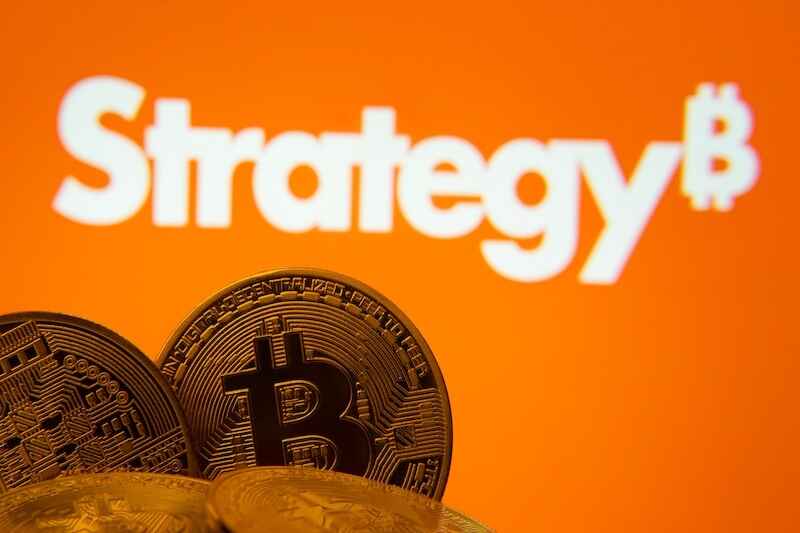Mining for Profits in the Digital Gold Rush
Robert Ross|March 18, 2024

Funny how things change…
A year ago, I couldn’t get anyone excited about investing in crypto.
But as Bitcoin soars to new highs… I’m seeing plenty of interest and getting lots of questions about what’s going on in the sector now.
Like this one…
Robert Ross’ recent article describing Bitcoin was excellent and highlights the reasons I got into Bitcoin five years ago. However, the idea that the coming of the next halving will create a huge bull run puzzles me. Each of the last several halvings has produced smaller and smaller bull runs. Am I missing something? – Subscriber Don R.
First… thank you, Don, for the question. I’m always happy to respond to reader questions. Crypto is a relatively new asset class than many investors are not familiar with.
But as someone who’s invested in crypto since 2017 (and even wrote a book on the topic for Simon & Schuster)… I’ve learned a thing or two and am happy to help.
Because understanding how Bitcoin – and especially the upcoming halving – works could make you a lot of money this year.
Half the Coins, Twice the Fun
To understand the Bitcoin halving, you need to understand how Bitcoins are “mined.”
Mining is the process through which new Bitcoins are created and added to the circulation. It’s also how transactions are verified and added to the public ledger, known as the blockchain.

Miners use powerful computers to solve complex math problems. When they solve one, they are awarded Bitcoins and transaction fees. This process requires significant computational power and electricity.
The halving event reduces the reward for mining new blocks by half, which occurs approximately every four years. This mechanism ensures that the total supply of Bitcoin caps at 21 million, making Bitcoin a deflationary asset.

The halving aims to mimic the scarcity and inflation resistance of commodities like gold. That’s why Bitcoin is known as “digital gold.”
Pricing Power
The halving is significant because it directly affects the supply of new Bitcoins entering the market.
With each halving, the rate at which new coins are created slows down, which can lead to an increase in price if demand remains constant or grows.
It’s basic supply and demand. As something becomes rarer (in this case, the rate of new Bitcoin creation), its value tends to go up, assuming demand stays the same or increases.
And historically, this is exactly what’s happened to Bitcoin prices after a halving event.
In 2012, 2016 and 2020, we saw significant bull runs in the months leading up to and following the halving.

However, our reader did have a point about the magnitude of the post-halving moves.
Still Explosive
While Bitcoin has reliably rallied after each halving, the percentage moves higher have been lower.
For instance, after the first halving in November 2012, Bitcoin’s price surged from approximately $12 to about $1,000 within a year. This represents an astonishing increase of approximately 8,233%.
Following the second halving in July 2016, Bitcoin went from around $650 to roughly $2,500 by the end of the cycle, marking an increase of approximately 2,515%.
After the third halving in May 2020, Bitcoin’s price ascended from about $3,900 to nearly $64,000 by the end of the cycle, showcasing a 1,541% rise.
While this halving will likely show a similar slowing, the pattern points to a 708% gain this cycle.
That would peg Bitcoin’s price at $121,000 this cycle, slightly below my target price of $165,000.
But there’s something to note about this cycle…
The Halving Is One Piece
As we look forward to the next halving, it’s essential to consider the broader context of the crypto market and global economy.
Several factors could create more demand for Bitcoin. I’m talking about increasing institutional interest, the proliferation of crypto financial products, and greater public awareness and adoption.
And the ongoing search for inflation hedges and digital gold may further spark interest in Bitcoin. This is especially relevant in the face of uncertain monetary policies.
Yes, the halving is a major event for Bitcoin… but it’s just one piece of the puzzle. Many other factors will likely influence the future price movements of Bitcoin. The halving is an important consideration, but it’s not the only one.
That’s why investors need to keep a well-informed, diversified approach and focus on Bitcoin’s long-term potential. That will put them in position to profitably navigate the ups and downs of the crypto market.
Note: While we could see at least a 700% gain on Bitcoin… there are small altcoins that stand to do even better after the halving. I’m talking about gains of 1,000% to 10,000%… or even higher over 12 to 18 months. See how it’s possible here.



